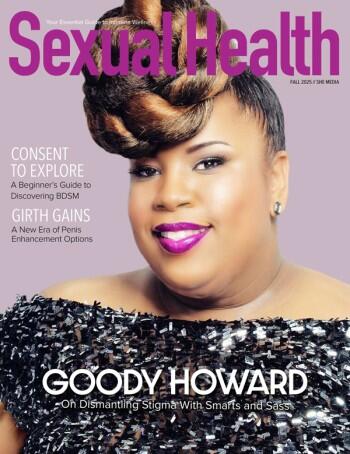As an influencer, I get approached multiple times a day by various brands. However, I have a personal rule: I only work with brands with an ethos similar to my own, and brands that make it obvious that they actually do want to work with me. To help you get the most out of your influencer marketing strategy, and to help make sure you end up working with the right people for your brand, here are some tips for finding and communicating with influencers, along with my personal reasons for choosing the brands I work with.
Approach the right influencers for your campaign
If you have a very small budget or no budget at all, target influencers who have fewer than 10,000 followers, as they will likely be most eager to grow their business.
Compile a list of influencers relevant to your brand. What is your target audience? Who will be buying your product, or interested in hearing about it? For instance, if you are trying to promote a sex toy, steer clear of mom or family bloggers as their followers will most likely be looking for more family-friendly activities.
There’s also the opposite end of the spectrum: sex educators and sex toy reviewers, who only write about sex toys. While they are right in your target zone, if all their content is made up of products, it may be easy for your product or service to get lost. You also need to consider that while their audience is interested in sex toys, many of them may not be interested in continuously investing in toys on a regular basis. Please note that I am not advising against working with sex educators or writers! It’s always important to get on their good side and have them affiliate with your business. However, it’s just as important to go for other influencers too.
If you find yourself a sex-positive influencer who doesn’t just post about sex toys but also includes lifestyle, beauty, skin care and general advice or life updates, you may have just struck gold. That type of platform can make your content stick out more, and thus attract more consumers and sales. It’s all about finding the middle ground.
If influencers like your brand and product, they will be just as keen to work with you as you are to work with them. So don’t hesitate to ask for their audience statistics and their best posting times. Ask them for link clicks and engagement stats on stories and reels; this way you can make a more informed guess about whether your investment will be worth the engagement you might receive. I get asked this for each campaign I work on, and I don’t mind at all. In fact, it shows that they are eager to work with me and are working out the best possible solution for how a campaign might go.
Also, choose an influencer who doesn’t have a page full of ads. Too many ads can make their posts start to appear disingenuous to their audience, and then no matter what they post, you won’t get what you wanted from the campaign. You’ll have wasted your time and finances with no return.
Set a practical budget
When I first started getting approached by brands, I would often work on a “gifted” basis, meaning I got paid in products. For brands, this is a relatively risk-free option, but as the job of content creator became a full-time role, I needed to start attaching a fee to my content, just like any other job.
If you have a very small budget or no budget at all, target influencers who have fewer than 10,000 followers, as they will likely be most eager to grow their business. This is a really good place to start because it also allows you to start building relationships with influencers right from their inception. You can both work together and grow each other’s respective brands at the same time. However, if you do want to work with larger influencers, then you need to be prepared to present a budget.
When planning a budget for working with an influencer, the best thing to do is to look at your average cart value and product value. Ask yourself, “How can I break even?” or “How can I make a profit from this exchange?” If your product is $10, and the influencer charges $100, then you will need the influencer to bring in 10 sales to make this a worthwhile business investment. If your product is $100, then they will only need to sell one. With that in mind, think logically and ensure that the budget is fair for what you are asking.
Get Personal
Okay, so now you’ve got a wish list of influencers that you want to work with, and you have your budget set. How do you action this? As I mentioned, I get approached by brands quite often, so I can tell you that first impressions do matter. The initial communication definitely helps me to make up my mind on whether I would like to work with a brand or not.
Your first step, and arguably the most important one, is to create a bespoke message for each influencer to whom you reach out. It’s fine if you want to reach out to 10, 20 or 100 influencers, but make sure your message is personalized to each. I’ve been called the wrong name and received generic messages, or even just forms. This makes it clear to the influencer that the brand isn’t truly invested in who will promote their product.
Naturally, brands that approach me for collaborations will also be contacting multiple other influencers in the hope of finding the perfect fit with one of us, but there is a massive difference between receiving a personal message that shows genuine interest, and a copied-and-pasted boilerplate message. I respond really well to those who do send me a personalized message, such as “We love the work you did here.” This shows that they have at least spent a few minutes glancing over your profile, that they understand what you do, and that they have some interest in you and see your content as a good fit.
Build a relationship
If influencers’ posts do well, use them again. If you really love working with an influencer and think they are perfect for your brand, offer a long-term strategy with them. The more posts an influencer does for a brand, the more trust will be built with their audience, which will eventually lead to sales — and maybe even your dream influencer becoming your brand ambassador!
Offer creative freedom
Each influencer has their own individual way of working with brands and coming up with content ideas, but it’s important at least to share with the creator your important brand messaging, and a rough outline so they have something to work with. Some influencers like a brief to stick to, and brands that have a strictly defined tone of voice or image to follow may send a brief in the first instance. However, as an influencer I also have my own brand and my own image that I need to keep up with. If they have a specific idea in mind, that’s great; I’m more than happy to work together on the best creative outcome. However, I do like putting my own spin on the brief, and brands that work with me expect this.
Activist, positivity rebel and midlife-mindset-shifter Lou Featherstone, aka Lu in Luland, is “aging disgracefully,” and she’s on a mission to champion causes that help women of all ages be completely confident in themselves.








